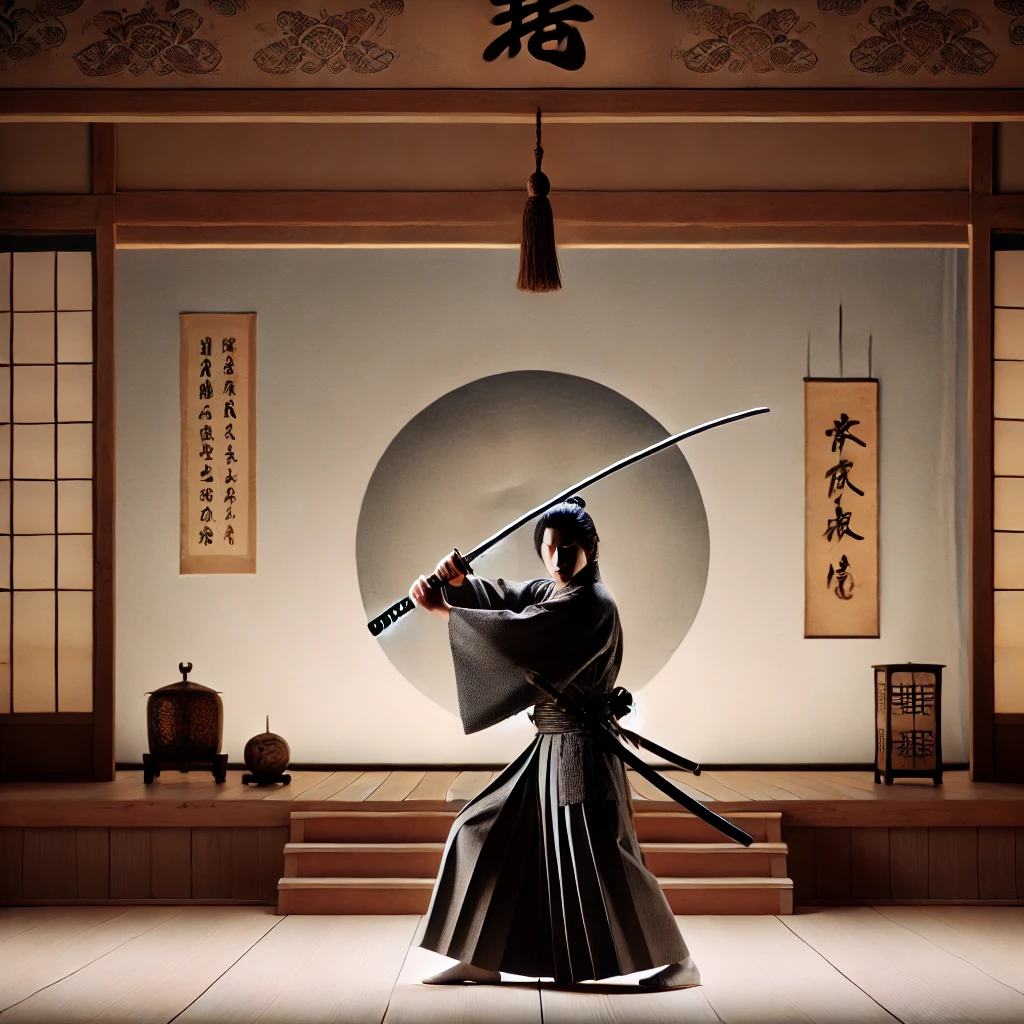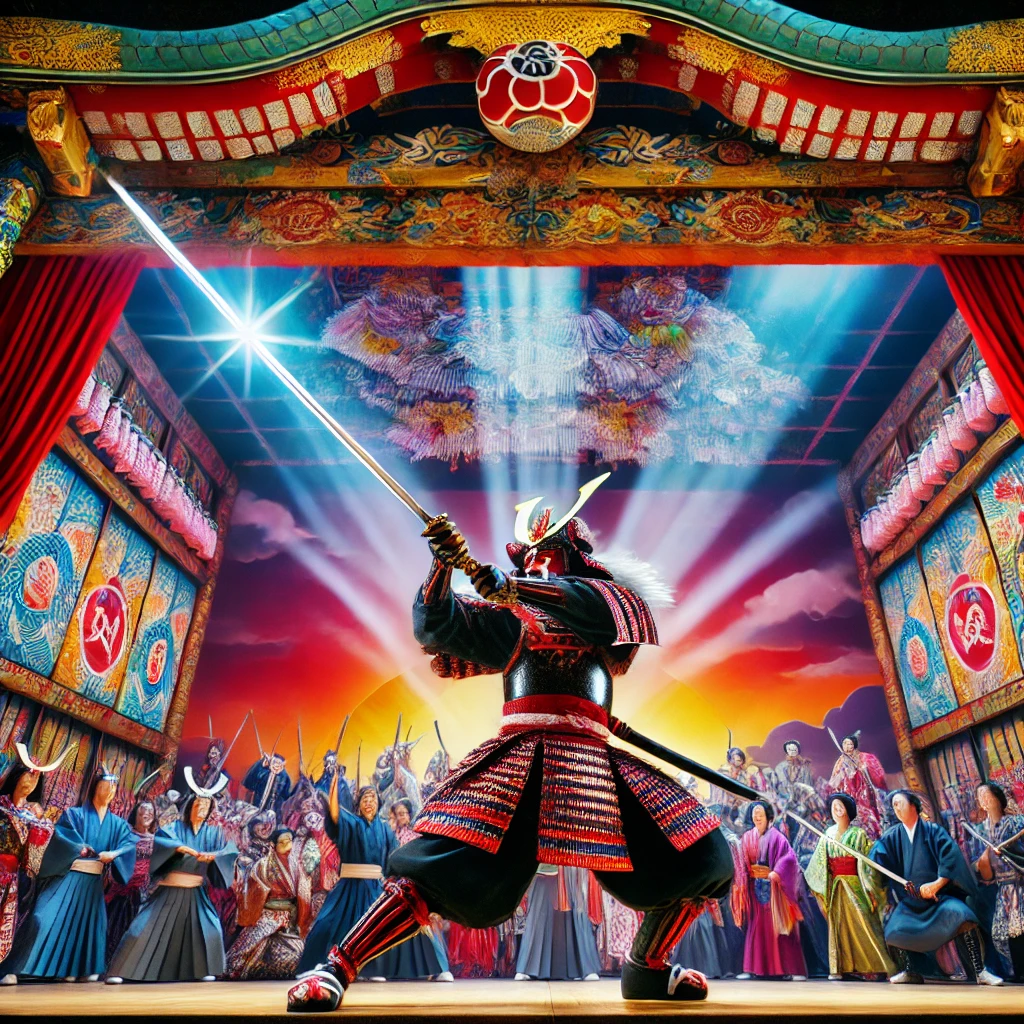The Japanese katana sword is more than just a weapon. It symbolizes honor, power, and tradition. In both Kabuki and Noh, the true katana serves as a powerful symbol. These forms of traditional Japanese theater use the katana for both action and meaning. This article explores how the katana adds depth to these art forms.

I. The History of Kabuki and Noh
Kabuki and Noh represent two unique theater styles. Noh, which started in the 14th century, emphasizes slow movements and minimalism. The Japanese katana sword plays a symbolic role in Noh. Samurai characters often carry the katana, reflecting their fate and honor. On the other hand, Kabuki, which began in the 17th century, is more dramatic and lively. It uses the katana in sword fights and displays of social status. While Noh focuses on subtlety, Kabuki highlights bold action.
II. Symbolism of the Katana in Noh
In Noh, the true katana transcends its physical function, serving as a powerful symbol of the connection between life and death. Samurai characters, carrying the katana, are often portrayed grappling with deep inner struggles and existential dilemmas. A prime example is the famous Noh play Atsumori, where the samurai protagonist is killed in battle. His Japanese katana sword embodies his warrior spirit, honor, and unavoidable fate. The katana in Noh reflects the theme of impermanence, representing life’s fleeting and transient nature, reminding audiences of the inevitable passage of time and mortality.
III. The Role of the Katana in Kabuki
Kabuki uses the katana in more dynamic and action-packed ways than Noh, emphasizing movement and energy. The Japanese katana sword plays a central role in Kabuki’s intense and thrilling action scenes. In the famous play Chushingura, the 47 ronin carry their true katana as they seek to avenge their fallen master. These swords are not just weapons but powerful symbols of their honor, loyalty, and commitment to the samurai code. The katana helps build dramatic tension during choreographed fight scenes, enhancing both the visual spectacle and emotional depth of the performance.
IV. The Katana as a Status Symbol
The Japanese katana sword also functions as a powerful status symbol in both Kabuki and Noh theater. Samurai characters are always depicted carrying a katana, which signifies their high social rank, authority, and moral standing. In Kabuki, characters without a katana often aspire to possess one, as the sword represents not just power but also honor and respect. Stealing a katana can symbolize a character’s quest to reclaim lost honor or rise in status. This illustrates how the true katana becomes a potent symbol of transformation, ambition, and personal empowerment within the narrative.
V. The Use of Props in Japanese Theater
The true katana is a highly stylized and symbolic prop in traditional Japanese theater. In Noh, actors handle the Japanese katana sword slowly and with great care, reflecting its deep spiritual and symbolic significance. This deliberate treatment emphasizes themes of life, death, and honor. In Kabuki, actors perform rapid and precise movements with the katana, creating excitement and visual drama, especially during intense fight scenes. While Noh focuses on the katana’s symbolic and spiritual meaning, Kabuki highlights the sword’s role in action, spectacle, and dynamic storytelling, captivating audiences.
VI. The Katana’s Enduring Legacy in Theater
Today, the Japanese katana sword continues to play a vital and meaningful role in both Kabuki and Noh theater. Both of these traditional art forms still rely on the true katana as a powerful symbol of honor, fate, and cultural heritage. Audiences deeply appreciate how the katana bridges modern performances with Japan’s rich and storied history. Its presence on stage not only enhances the drama but also links today’s viewers to the timeless traditions of the ancient samurai, preserving the essence of their values and legacy.

VII. Conclusion
The Japanese katana sword remains a significant and enduring element in traditional Japanese theater, particularly in Kabuki and Noh. In these art forms, the true katana symbolizes honor, power, and social status, playing a crucial role in the development of characters and themes. Noh uses the katana to express deeper spiritual and philosophical themes, often highlighting life, death, and fate. Kabuki, on the other hand, employs the katana for dynamic, action-packed scenes and dramatic tension. By bridging the past and present, the katana continues to preserve its place in Japan’s rich cultural heritage.